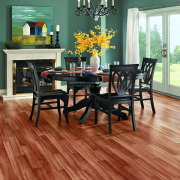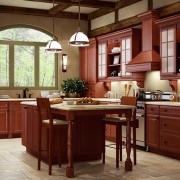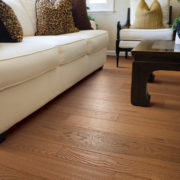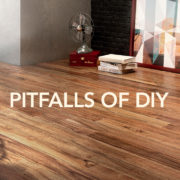Pre-finished Solid and Engineered Hardwood
As you consider upgrading your home, flooring should be at the top of your list. It is the silent component that is the most used and most visible in your home or office. In any room or space, the flooring is the foundation. Upgrading the flooring improves the look and feel of the space. Both pre-finished solid and engineered hardwood are excellent options, but they have features that differ.

For the sake of clarity in this article, we will refer to pre-finished solid hardwood as simply solid hardwood. There is such a thing as hardwood that is not pre-finished, but that is for another discussion.
If you’re looking to add warmth and beauty to your home, nothing compares to genuine hardwood flooring. Engineered and solid hardwood floors are both made from 100% real wood, but there are significant differences in their overall construction. Hardwood Flooring 101
What is the difference between Pre-finished Solid and Engineered Hardwood?
- Pre-finished solid hardware is traditional hardwood. It is a piece of solid wood.
- Engineered hardwood is layered on top of other materials.
- Both are considered “real hardwood.”
To help you decide which to choose, here are a few basic comparisons:
THE STRUCTURAL FEATURES
Between Pre-finished Solid and Engineered Hardwood
Solid hardwood is usually pre-finished to improve durability and strength.
These wood strips and planks are typically coated with multiple layers of an aluminum-oxide-infused polyurethane and cured under UV lights; this process creates an exceptionally hard finish… This Old House
Engineered hardwood has multiple layers.
Engineered wood flooring is made of plywood with a veneer of fine hardwood on top… engineered wood is most closely aligned to solid hardwood… Resale value is high; home buyers love it.
Do not confuse engineered wood with laminate. It is real wood.
THE DURABILITY FEATURES
Between Pre-finished Solid and Engineered Hardwood
Solid wood planks are milled from a single piece of hardwood and covered with a thin, clear protective layer that often consists of aluminum oxide, ceramic or an acrylic substance.
Solid hardwood planks are generally 3/4 inch thick. It is recommended for ground level floors and above but not in basements because of moisture. The protective layer is good for most areas except below ground, bathrooms, and shower areas.
Engineered wood can be installed in basements and moist areas because of the design of it’s multiple layers.
In summary, both types rate high for durability.
THE COST CONSIDERATION
Between Pre-finished Solid and Engineered Hardwood
Solid hardwood will cost more depending on the type of wood. But some top-end engineered woods will cost about the same. Either way, when you do your budget, consider flooring as an investment that adds value to your home.
Beautiful wood floors of either kind will always increase the warmth and beauty of your home. As a bonus, when you decide to sell, the value is much higher. You will be rewarded with a higher equity and a bigger resale profit.















